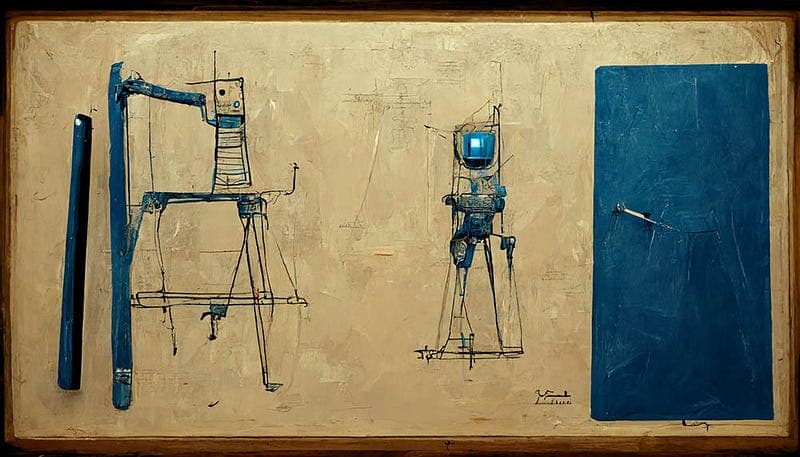5 Tips to Have Fun Using MidJourney AI Image Generation

MidJourney, an AI image generation service, has opened up its service to the general public. They have also relaxed their terms of service to allow selling the art as NFT. And you, as the person requesting the images, are now the primary owner — as long as you are a subscriber. (The trial gives you 20 or so images generated under Creative Commons 4.)
To play along, all you need is a Discord account.
I was curious as to what it could accomplish. I'd seen output from Dall-E 2 and Imagen, and I was aware MidJourney would be unable to be as photorealistic. What I didn't expect was to have so much fun along the way.
There are a few tip and tricks I've picked up along the way. In the hope of being useful, here they are:
All the interaction with the service is done via Discord. Once you've signed up to the Open Beta / Trial, head to one of the #newbies channels within the Midjourney Discord channel. Start typing /imagine and there will be a small popup confirming you want to trigger an image generation. This is where the fun starts!
Tip 1: Start by describing the main subject
If you have a specific idea in mind, pretend you are describing exactly what you want to someone with no imagination and no abstract concepts. And start by stating what you want the main subject to be, it would seem the AI might be using the word order as an indicator of intent.
Tip 2: Use the styles and the aspect ratio flag
The MidJourney system has been trained to recognize and use various styles. A number of them have been referenced here. These can highly impact the final aspect, so for example use "octane render" and "unreal engine 5 render" if you're looking for a rendered 3D engine look, or "Ghibli Studio" and "Pixar" if you're looking for a cartooning look.
The vocabulary from filmmaking also seems to be effective for getting the desired look.
Another useful tool is the aspect ratio flag. For example, add --ar 16:9 to have a landscape picture generated, or --ar 9:16 to have a portrait (i.e. Instagram stories) format
Tip 3: Rince, repeat, reiterate, reweight and explore
When you're creating the image the bot will suggest four alternatives. You can then request a number of things with the buttons that appear underneath the four options. You can request a new batch, you can ask the bot to create variants of any specific image of the four, and lastly, you can upscale the images.
Play around with the terms, and explore the variants.
If you're having trouble getting it to show a specific subject, throw the thesaurus at it: try "dragon, gecko, lizard, scaly" if only one word is working.
You can also add specific weights to works using :: so for example dragon ::2 gecko :: lizard :: scaly ::2 will give higher importance to dragon and scaly.
You can also try an avoid certain outputs by using the --no flag, for example --no wings if you want a dragon with no wings.
Tip 4: Try the different algorithms
Using flags you can try out the next and previous algorithms.
The --test flag will allow you to try out the experimental new algorithm, and --vibe allows you to test the previous one.
Tip 5: Understand the image input
When you send an image (that you need to provide first in the prompt) you need to imagine that someone is going to describe the image, and someone else is going to draw what they imagine based on what the first person has described. It is completely different from using image editing tools.
You can change the importance of the image in the output by using the --iw flag for instance --iw 2 .
Key Takeways
I've only started dipping my toes into the water, and *boy *am I having fun! And since the beta is now open, you can too!
We help you better understand software development. Receive the latest blog posts, videos, insights and news from the frontlines of web development



